
Every day, in workplaces and settings around the globe, workers handle a plethora of unique and hazardous chemicals. The Toxic Substance Control Act (TSCA) Chemical Substances Inventory provides information for more than 60,000 chemicals. It would be unfeasible for any professional to get to know every single chemical, the risks associated with those chemicals, and how the chemicals should be transported, handled, or disposed. The GHS, or Globally Harmonized System in short, is one way every individual who meets a hazardous chemical can understand its specific dangers. What is the GHS? Let's take a closer look.
What is the GHS?
The GHS is the Globally Harmonized System of Classification and Labelling of Chemicals. In layman's terms, the system is a globally recognizable way to properly classify and label hazardous chemicals so that:
- Health, physical, and environmental hazards are clearly defined
- Available chemical data is uniformly classified using predefined categorical hazard criteria
- Information about the hazard is easily recognizable due to uniform information and images on labels and SDSs (Safety Data Sheets)
The GHS is designed to get every country in agreement in regard to how chemicals are labeled and identified. No country is actually required to adopt the GHS for use; instead, the UN has only made a recommendation. However, the GHS is currently being put to use in at least 65 countries, including in the United States, which adopted the GHS in 2012.
Why Does the GHS Exist?
The GHS was originally developed by the United Nations in efforts to harmonize the classification and labeling of hazardous chemicals in a way that could be applied and understood on a global level. While most countries have used their own classification and labeling processes in the past, such as the Hazard Communication Standard (HCS) set forth by OSHA in the United States, a more globalized economy has naturally led to the need for an unambiguous system. In fact, there is a $1.7 trillion dollar trade of chemicals around the world that must be properly classified and labeled.
Even though standards set forth on local levels can be effective to reduce hazards within that country, having a number of entities creating their own labels and safety data sheets creates discrepancies. These discrepancies may be small or slight, but they can also still bring about confusion and heightened risks for handlers when those chemicals are transported internationally. As an adage, some countries in the past did not have a formal system for classifying or labeling chemicals at all.
The United Nations specified there was a need for a system that could be openly perceived by material handlers in any country. During the Earth Summit of 1992, the UN raised these concerns, and then set forth a plan to have an established "globally harmonized classification and compatible labeling system" by the year 2000. The first version of the GHS was published in 2003, and the UN called on other countries to adopt the GHS by 2008. The GHS has been revised for added content three times since its original creation.
What Are the Hazard Classifications and Categories of the GHS?
The GHS hazards are broken down into three umbrella groups: Health hazards, physical hazards, and environmental hazards. Health hazards would be chemicals that could cause direct damage to some aspect of human health, such as a chemical that could cause cancer. Physical hazards are products that could cause direct injury, such as burning the skin or causing corrosion to the body. Environmental hazards are those that pose some type of hazard to the environment, such as toxicity to aquatic animals.
The GHS hazards are broken down into three umbrella groups: Health hazards, physical hazards, and environmental hazards. Health hazards would be chemicals that could cause direct damage to some aspect of human health, such as a chemical that could cause cancer. Physical hazards are products that could cause direct injury, such as burning the skin or causing corrosion to the body. Environmental hazards are those that pose some type of hazard to the environment, such as toxicity to aquatic animals.
- Aspiration toxicity
- Carcinogenicity
- Reproductive toxicity
- Skin corrosion
- Acute toxicity
- Target organ systemic toxicity: single and repeated exposure
The types of hazards are then categorized into GHS hazard categories. These more definitive hazard categories designate the severity of the hazard within the specified hazard class. For instance, in the Health Hazard group, the Acute Toxicity classification may then be categorized by assigned numbers between 1 and 4 to show the severity of the hazard; 1 being the most dangerous and 4 the least.
Essentially, the GHS classifications and categories are meant to act as building blocks to give a more encompassing explanation of the hazard. However, not all authorities use or recognize the extensive categories for each hazard. But, if an authority does decide to use a certain classification, such as a level 3 acute toxicity, they are requested to also utilize the higher categories (1 and 2) within their designations. You can see a full breakdown of hazard classifications and categories by examining the materials provided by the United Nations Economic Commissions for Europe.
What are the Nine GHS Pictograms and What Do They Represent?
All GHS pictograms have the same layout; a black silhouette-like symbol to represent the specific hazard is placed against a white background and contained inside a red square border, which is set up on a point. The standardized designs are meant to be simple to recognize and the image makes it easy to assume the implied hazard warning.
Health Hazard
Portrays a silhouette of a human upper-body with a splay of white graphics centered over the chest area. This pictogram is associated with the following hazards:

- Carcinogen
- Mutagenicity
- Reproductive Toxicity
- Respiratory Sensitizer
- Target Organ Toxicity
- Aspiration Toxicity
Flame
Shows a bundle of flames set over a bold black horizontal line. The pictogram is associated with:
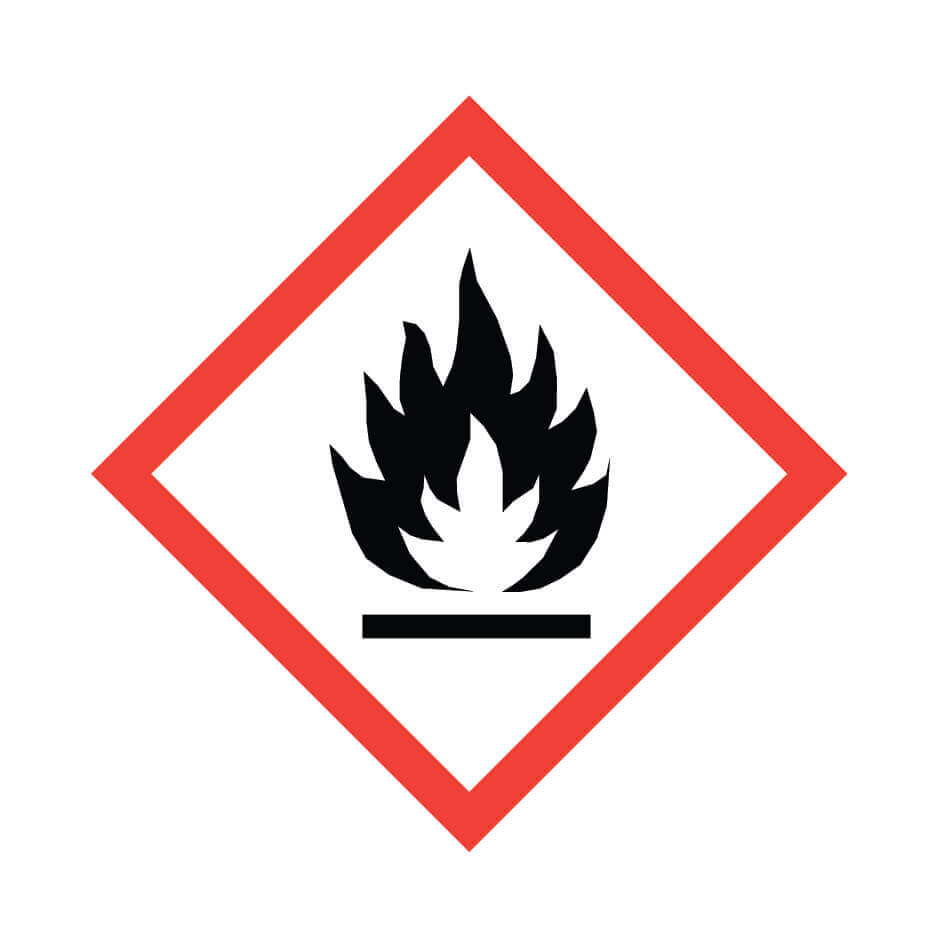
- Flammables
- Organic Peroxides
- Pyrophorics
- Emits Flammable Gas
- Self-Heating
- Self-Reactives
Exclamation Mark
Offering a bold exclamation point only, this pictogram signifies:
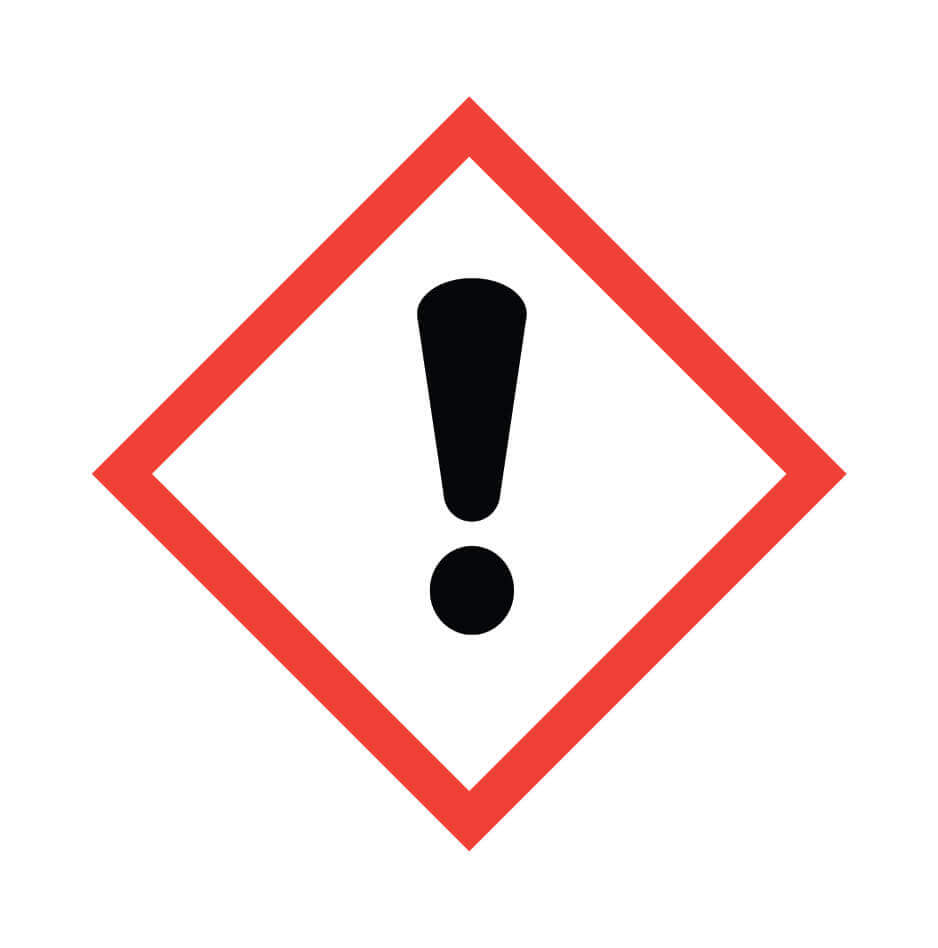
- Irritant (skin and eye)
- Acute Toxicity (harmful)
- Narcotic Effects
- Skin Sensitizer
- Hazardous to Ozone Layer (Non-Mandatory)
- Respiratory Tract Irritant
Gas Cylinder
Consists of a single gas cylinder silhouette and represents gases held under pressure.
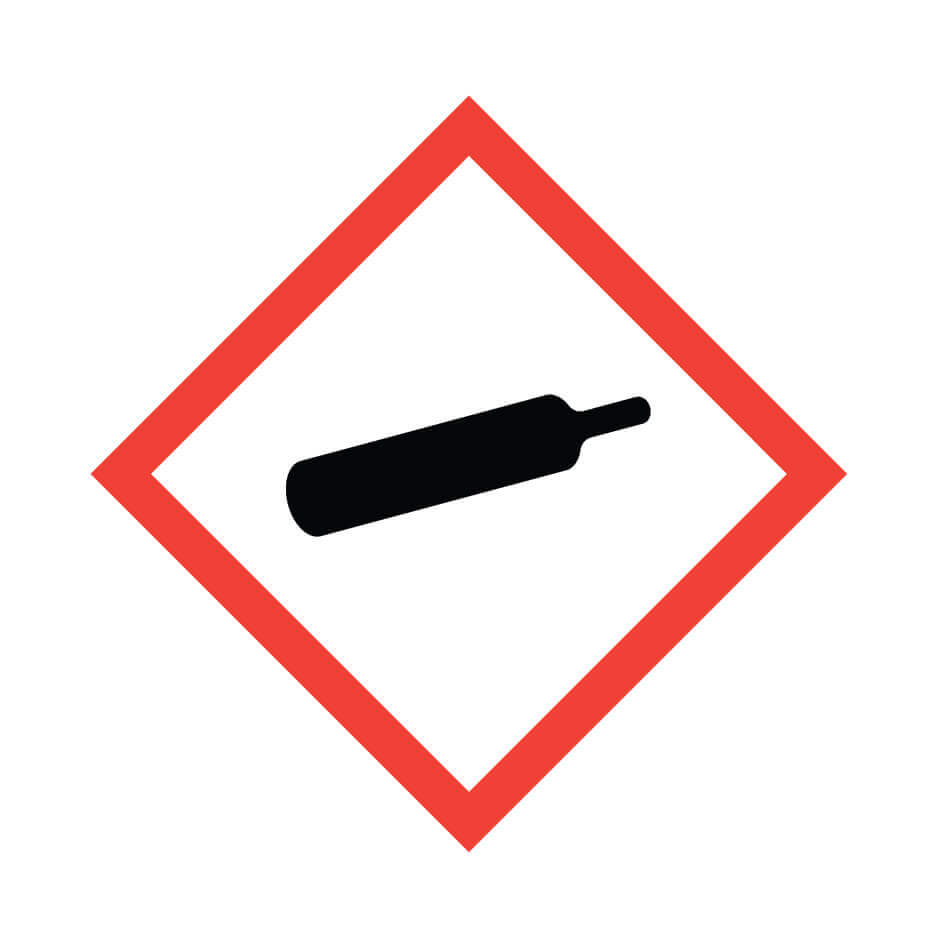
Corrosion
Shows test tubes of "chemicals" pouring on hands and a black surface and causing damage. Signifies contents causes or is:
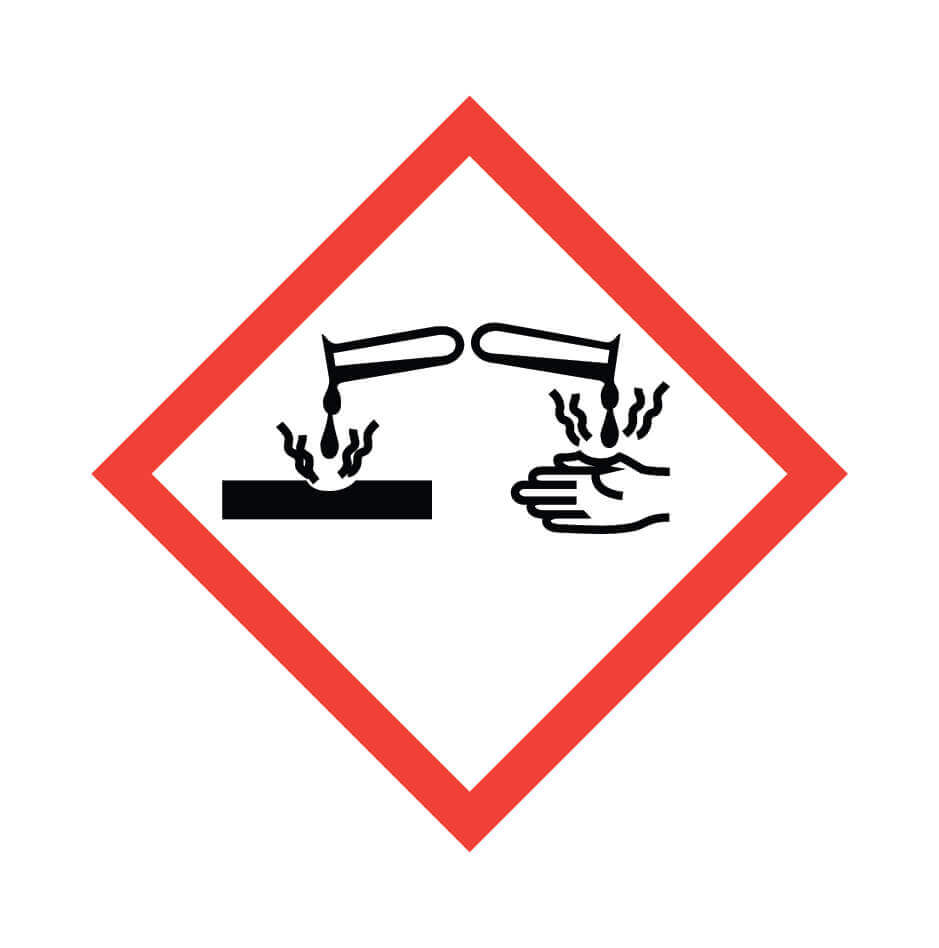
- Skin Corrosion or Burns
- Eye Damage
- Corrosive to Metals
Exploding Bomb
Portrays an exploding, round bomb. Means the contents are:
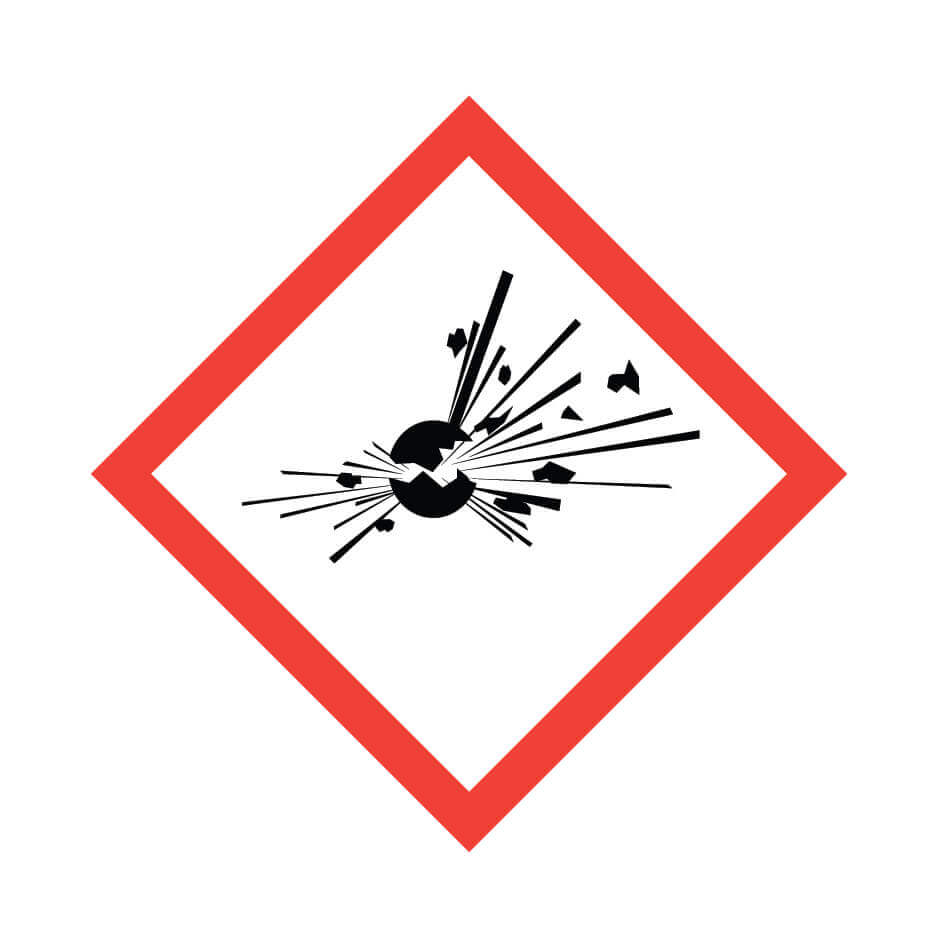
- Explosives
- Self-Reactives
- Organic Peroxides
Flame Over Circle
Consists of a circle in front of a bundle of flames and symbolizes oxidizers.
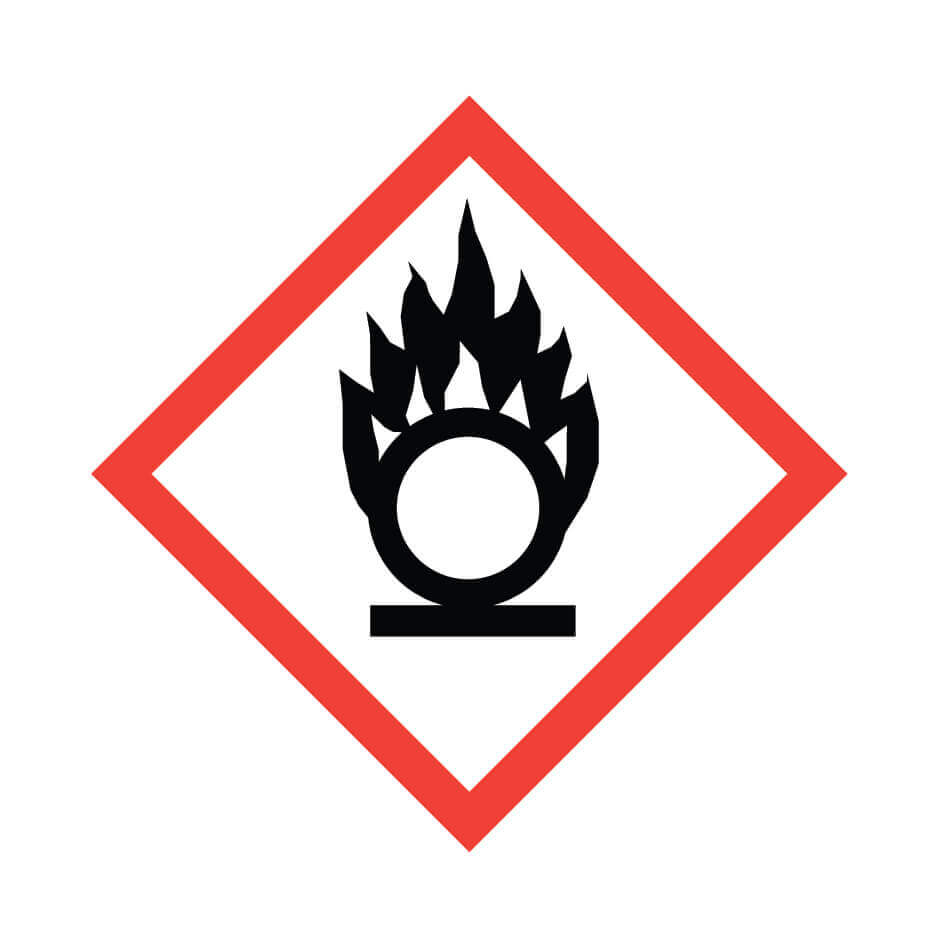
Environment (Non-Mandatory)
Shows a fish floating upside-down in water with a tree silhouette in the background. Symbolizes aquatic toxicity.
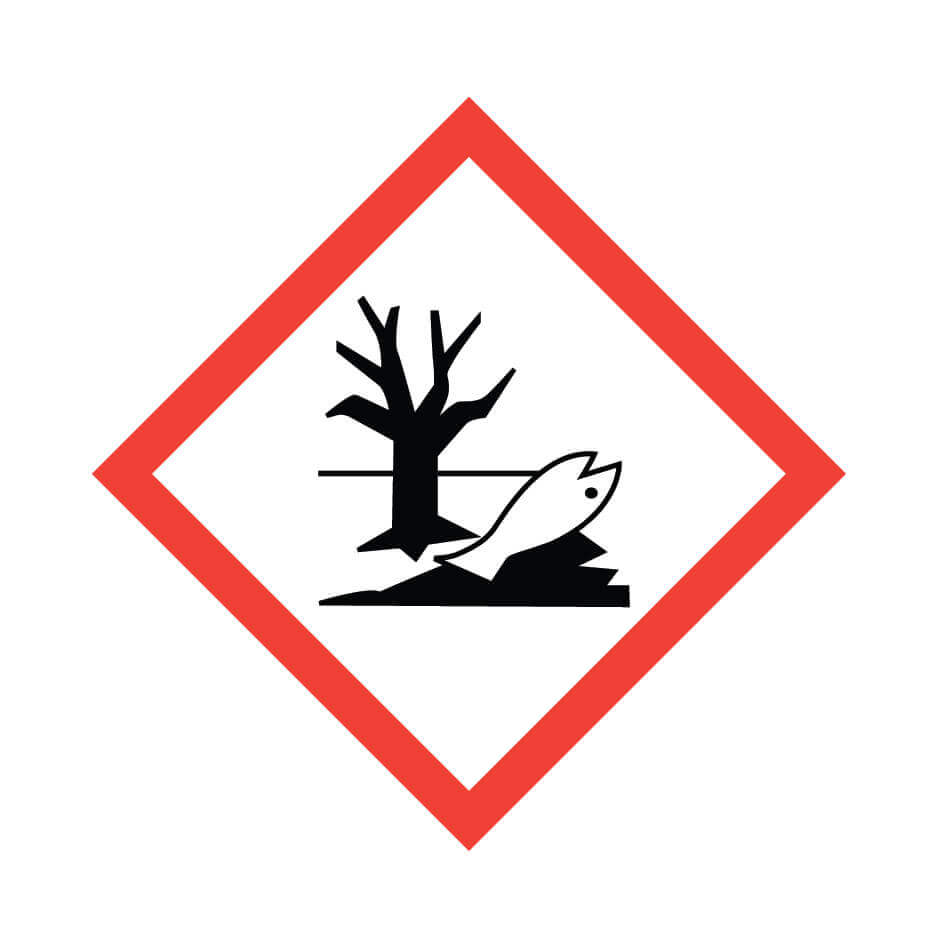
Skull and Crossbones
Portrays the standard skull and crossbones. Represents that the contents may cause acute toxicity (fatal or toxic).
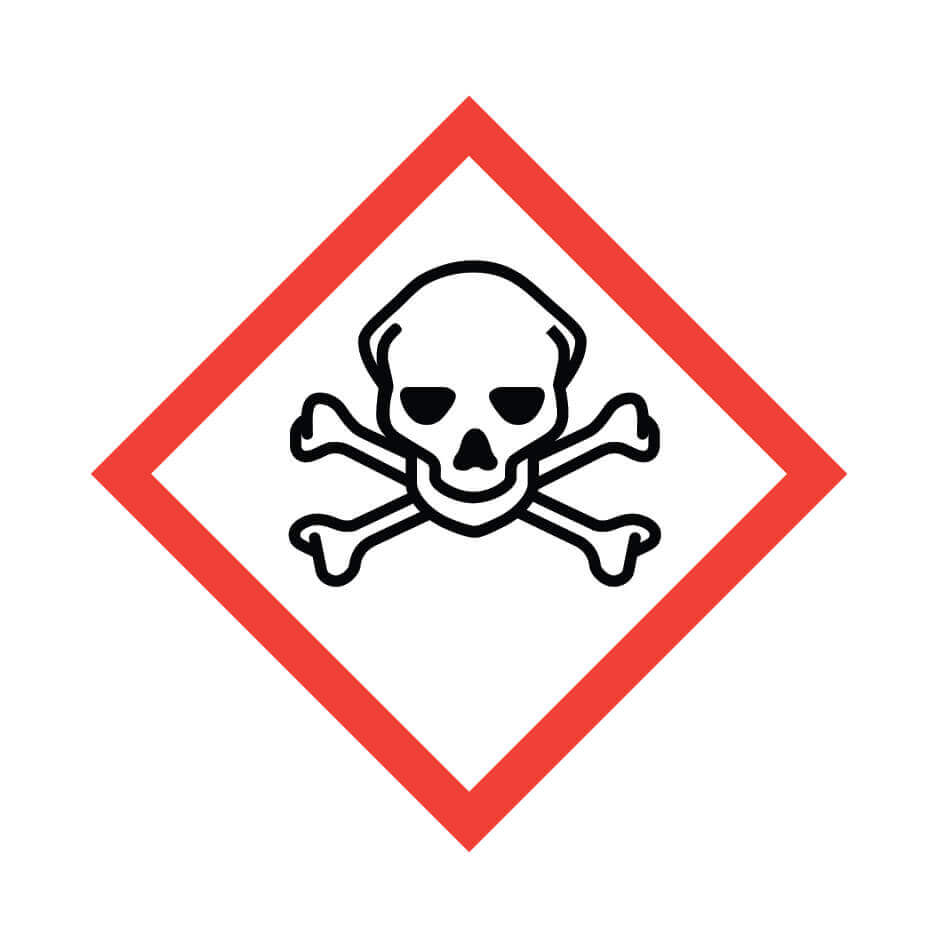
What Is a GHS Hazard Statement?
GHS hazard statements are specifically assigned to certain hazard classes or categories. These statements give more insight into the hazards associated with the product, including the extent of hazard when appropriate. For example, a Skull and Crossbones infographic may be paired with a hazard statement that says, "Fatal if swallowed," or "May cause damage to organs through prolonged or repeated exposure."
Each GHS hazard statement is also designated with a code, which is the letter "H" paired with a three-digit number. This code is meant for reference purposes when the actual statement needs to be translated, and each number within the code can signify a certain meaning. However, the full hazard statement must be written on the label. For example, code H350 means "May cause cancer." Hazard codes and statements can also be joined together. For example, the three conjoined codes H300+H310+H330, all of which have their own designated meaning, would be accompanied by three hazard statements joined together: "Fatal if swallowed, in contact with skin, or if inhaled."
What Industries Use the GHS?
A number of industries rely on the GHS as a means to ensure safe handling, transport, production, use, and disposal of hazardous chemicals. Pretty much any industry that may handle hazardous chemicals will use the GHS. Some of the most noteworthy industries that utilize the GHS include:
- Pharmaceutical industries
- Pesticide/herbicide manufacturers
- Transportation/shipping industries
- Consumer product manufacturers (e.g. paint, household chemicals, etc.)
- Chemical retailers
- Emergency services
What Are the Benefits of the GHS?
The primary benefit of the GHS is the fact that chemicals can be more uniformly labeled and easily recognized by employees or handlers. Thus, better everyone has access to more consistent hazard information. Several other benefits have emerged, however, such as:
- Easier to follow regulatory compliance protocols
- Better emergency response in instances of hazardous exposure
- Lowered safety instances related to improper handling, storage, or transport of chemicals
Another often overlooked benefit of GHS is reduced operational costs. When hazards are more clearly defined and identified, chances of mishandling or injuries decrease. Therefore, employers utilizing GHS may see costs associated with workplace injuries, property damages, or hazmat cleanup decrease as a result.
International Enviroguard has the chemical PPE you need to work safely and comfortably in chemical environments. Our chemical clothing includes chemical resistant suits, full cover aprons for chemical splash, protective arm sleeves, and more.
View our full line of ChemSplash® chemical protective clothing
The Globally Harmonized System - Final Thoughts
The GHS is designed to get everyone on the proverbial same page where chemical classifications are concerned. Harmonizing classification on a global level has grown increasingly important as chemical trade has grown to be an integral part of the modern economy. The GHS is specifically designed to encourage uniform classification efforts on a national level.
Through easily discernable classifications, categories, and pictograms, all chemical handlers can reap the advantages of safer work environments, easy compliance, and fewer problems with misidentification of a hazardous product. The flexibility of the GHS meets the varied needs of different countries while still creating continuity across nations where hazardous material classification and labeling is concerned. Lastly, the GHS keeps all workers safer within the global network of industries that work with hazardous chemicals.

